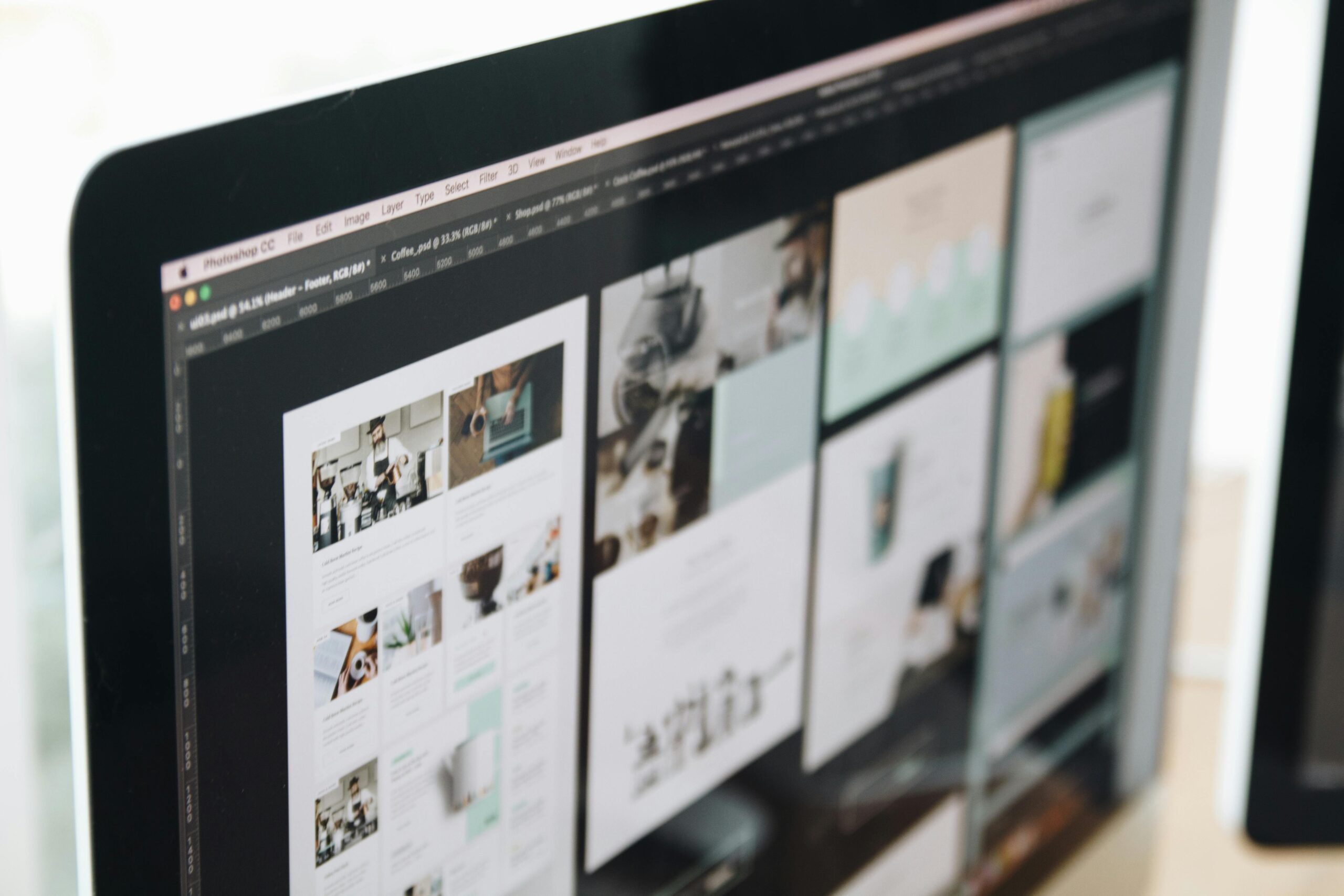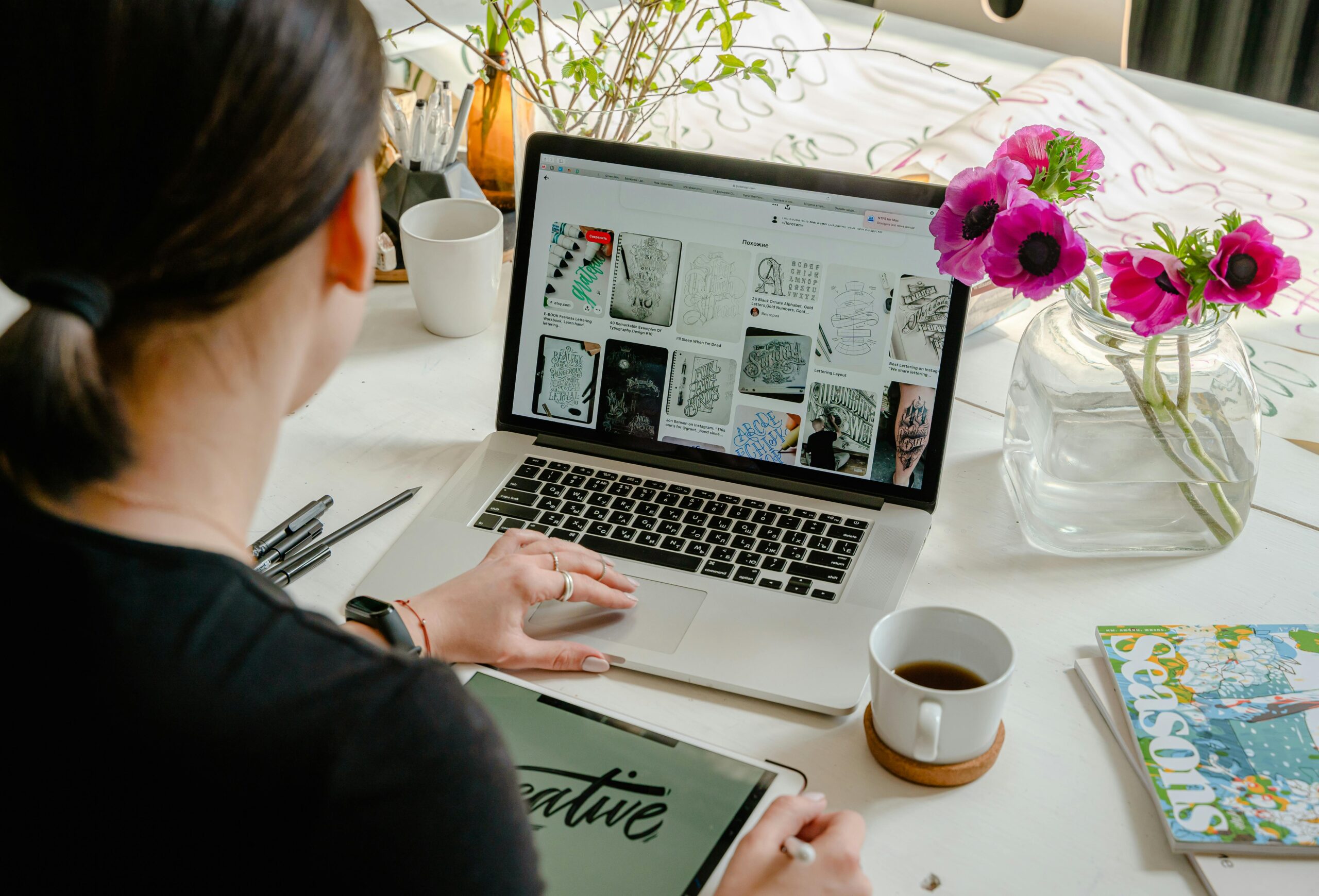 Clear coding guidelines help keep your design system consistent and scalable.
Clear coding guidelines help keep your design system consistent and scalable.
A strong website design starts with consistency. No matter how sleek your layout or vibrant your visuals are, if elements feel disjointed, users won’t stay. That’s where style guides for website designs come in. These guides are rulebooks that align every piece of the user interface with the brand’s voice, look, and feel.
Brands can’t afford confusion or visual clutter in a fast-moving digital landscape. A style guide helps you create harmony between your layout, typography, images, and interactive elements so your users know what to expect and how to interact. It’s not just about making things look good; it’s about clarity, function, and reliability.
As your team grows or more pages are added to your site, inconsistencies can creep in. Different font sizes, slightly off-brand colors, or unpredictable buttons can cause a fragmented experience. A solid style guide prevents that. It becomes the reference for all creative and technical decisions, saving time while strengthening your brand’s image.
Style guides aren’t just for designers. They’re essential tools for developers, marketers, and content creators. When everyone is on the same page, workflows become smoother, and the result feels professional. They help ensure that users get a consistent experience from your brand, regardless of the page they land on.
Whether building from scratch or refreshing an existing site, a clear, well-documented style guide saves time, supports teamwork, and creates a better user experience. In the long run, it reduces errors and improves communication across all departments involved in website development.
Why Your Website Needs a Style Guide
In web design, visual consistency builds trust. A style guide ensures every page, icon, and font across your website follows a unified standard. It makes collaboration easier, keeps the design cohesive, and ensures the brand message stays intact as your team scales.
Here’s what a solid style guide does:
- Defines core design elements
- Maintains consistency across all web pages
- Speeds up work for web developers and designers
- Reduces guesswork and errors
- Improves user experience and accessibility
- It helps sites adapt better across mobile devices and screen sizes
It helps everyone on your team stay aligned, from content writers to developers to visual designers. Concerning return, teams avoid unnecessary back-and-forth and make quicker decisions.
Essential Elements of a Web Design Style Guide
1. Brand Identity
Start with the foundation: your brand. A style guide should reference your logo, tone of voice, and values. This section should cover:
- Logo usage: spacing, placement, dos and don’ts
- Brand colors and where to apply them
- Taglines or mission statements
- Target audience
This identity section sets the tone for everything else. It ensures that anyone involved with your website knows what your business stands for and how to communicate that message visually.
2. Color Scheme
Your color scheme sets the emotional tone for the website. It should reflect your brand personality while being easy on the eyes. Include:
- Primary and secondary brand colors (with HEX/RGB values)
- Accent or highlight colors
- Background and neutral tones
- Usage rules (e.g., CTA buttons use the accent color)
Contrast matters, especially for web accessibility. Make sure your combinations meet WCAG standards.
A clear color strategy improves the visual appeal and ensures that call-to-action buttons, links, and headings are easy to find and navigate.
3. Typography
Font choices do more than just fill space. They set the mood. Your style guide should list:
- Font families for headings, body text, and CTAs
- Font weights and sizes
- Line heights and spacing ratios
- When to use bold, italics, or caps
Keep it simple: no more than two to three fonts across the site. Prioritise readability, especially on mobile devices.
Also, consider how fonts behave in different browsers and screen sizes. Make adjustments for responsive scaling where necessary.
4. Spacing and Layout
 Wireframes and templates bring structure and clarity to your website design.
Wireframes and templates bring structure and clarity to your website design.
Design breathes through space. Define how much white space to use between sections, elements, and images. Layout specs should include the following:
- Grid systems (12-column, 16-column, etc.)
- Margins and padding values
- Gutter widths
These keep your pages visually balanced and easy to scan. Good spacing prevents overwhelming the reader, especially when scanning content.
5. Buttons and Forms
Interactive elements like buttons and forms should be instantly recognizable. Style guides should define the following:
- Button shapes, sizes, and hover states
- Input field styling
- Error messages and validation patterns
- Dropdowns, checkboxes, and radio buttons
Make sure these are user-friendly and accessible. Consistent interactive patterns reduce user confusion and improve conversions.
6. Imagery and Visual Elements
Your visual design assets bring your brand to life. Be specific with guidelines for:
- Image styles (photography, illustration, iconography)
- Acceptable file types and sizes
- Color filters or overlays
- Placement rules
- Alt text standards for accessibility
Avoid using irrelevant generic stock photos. Instead, use your images that align with your brand story. A strong image style strengthens visitors’ emotional connection with your brand.
7. Navigation and Menus
A style guide should outline your navigation menus’ structure and visual treatment. Include:
- Top nav versus side nav design
- Sticky headers or dropdown behavior
- Link styles (active, hover, visited)
Good navigation improves the overall user interface design and keeps site visitors engaged longer. Clear paths between pages also help search engines understand your site structure, supporting better optimization.
Best Practices When Creating Style Guides
Involve Your Team
Get input from designers, developers, marketers, and stakeholders. Each team views the site differently and can offer valuable insight. This helps future-proof the guide and ensures buy-in from every department.
Keep It Modular
Break down your guide into components. This mirrors how responsive web design works and makes updates easier when your layout evolves.
Use Real Examples
Mockups or screenshots help explain standards more clearly. Annotate these examples to explain what to use, when, and why.
Make It Accessible
Use clear headings, short paragraphs, and searchable formats. Consider making it a living document online that updates as your brand evolves. Teams change, but a living document keeps the knowledge available.
Ensure SEO and Mobile Considerations
Your design guide should support search engine optimization. This means:
- Defining header tag usage
- Standardizing image alt text
- Ensuring layouts are optimized for mobile devices
You also want to ensure that your typography, navigation, and page speed improve the user and search engine experience.
8. Wireframes and Layout Templates
Include sample layouts or wireframes to make your style guide more actionable. These give teams a clear structure to follow and help reduce creative guesswork during development.
Wireframes don’t need to be high-fidelity; they can be basic sketches that show the positioning of elements like headers, body text, CTAs, and images.
Include layout templates for:
- Homepage
- Product or service pages
- Blog or content hubs
- Contact pages
- Mobile-first layouts
These templates help maintain visual consistency across the site and guide developers in building new pages. Wireframes also clarify where to place interactive elements, helping avoid rework later.
In addition, layout templates help communicate visual hierarchy. They ensure the most critical content stands out and secondary elements don’t compete for attention. This is especially useful for eCommerce and service-based websites, where information flow and clarity directly impact conversions.
Well-defined templates support mobile responsiveness by encouraging design flexibility across various screen sizes. Developers avoid common pitfalls such as inconsistent spacing or hard-to-tap buttons by planning how each layout element adapts to mobile devices early.
9. Coding Guidelines
If your team includes developers, coding standards should be part of the guide. Even the best visual design can fall apart when the implementation is inconsistent. Document how styles should be written and applied in code to keep everything aligned across browsers and devices.
Include notes on:
- CSS naming conventions
- Responsive breakpoints
- Component-based structure (if using frameworks)
- Accessibility best practices in markup
- Load performance and image handling
Coding guidelines also serve as a foundation for scalability. Developers must build on a consistent system as projects grow and new features are added. This improves collaboration across large teams and simplifies debugging issues or rolling back changes without breaking the visual interface.
Transparent coding practices help avoid inconsistencies and performance issues, particularly on mobile devices, where resources are more limited. For related advice, read our article on Front-End and Back-End Web Development.
Another advantage of including coding standards is version control. Teams can implement changes without fear of introducing unexpected behavior. Developers can quickly identify outdated styles or scripts and refactor them without disrupting the broader experience.
10. Accessibility and Content Standards
 Consistency in design starts with a well-documented style guide.
Consistency in design starts with a well-documented style guide.
Web accessibility is no longer optional. Your style guide should support inclusive design principles so that your site is usable by people of all abilities, regardless of age, device, or physical condition. But accessibility isn’t only visual—it extends to how content is structured and presented.
Some key points to include:
- Minimum contrast ratios for text and buttons
- Keyboard navigation support for all interactive elements
- ARIA labels for form fields and icons
- Alt text requirements for images and other visual elements
- Focus states for buttons and skip links
- Clear heading structure for screen readers
- Use of plain language for readability
Accessible websites not only meet legal standards, but they also reach a broader user base and improve SEO. Sites that load fast, function well on screen readers and respond smoothly to touch gestures earn better rankings on search engines. Learn more about user-first design in our User Experience in Web Development blog.
Related insights are also available in our post on Best Practices for Website Design, which highlights how smart design choices help create inclusive experiences.
Content standards, meanwhile, ensure your brand speaks with one voice. From blog posts to product descriptions, guidelines around tone, grammar, and structure help unify your messaging. Consider including examples of headline formatting, internal linking practices, and image captions that reflect your brand style.
Improving Your Design System’s Longevity
Once you have a style guide, your work isn’t over. A great style guide needs ongoing attention. Design trends shift, new pages are created, and new technologies emerge. Without regular updates, even the most well-crafted guide can become outdated.
Assign a specific person or team to manage the document and coordinate periodic reviews. Updates include adding a new component, refining brand colors, or revising navigation patterns after usability testing.
To manage updates smoothly, consider:
- Hosting your guide on collaborative platforms like Notion or Google Docs
- Using Figma libraries for visual assets
- Keeping documentation version-controlled using Git or a CMS
Also, make your style guide easy to find and navigate. If it’s buried in a folder or too complicated to use, your team will not follow it. Explore our post on Choosing the Right Web Development Stack for guidance on tech infrastructure.
A living design system means your business stays ready for growth. As new platforms, screen sizes, or customer needs emerge, your design language can adapt without starting from scratch.
Why Style Guides Matter for Business Success
Strong design systems help you move faster, avoid mistakes, and launch new features with confidence. They’re not just helpful for design consistency—they’re powerful business tools. Here’s what a strong guide brings to your operation:
- Onboarding new designers and developers more efficiently
- Faster development cycles and fewer miscommunications
- Clear brand expression across marketing and digital content
- Stronger user trust due to visual and messaging consistency
- Better SEO and user engagement from optimized web structures
When a website feels cohesive and user-friendly, people stay longer, explore more profound, and convert more often, leading to measurable improvements in business performance.
Having a style guide also reduces design debt. Instead of reinventing components for each project, your team builds on a reliable system. That saves time, improves outcomes, and keeps your digital presence sharp as you grow.
Wrapping It All Together: Building with Clarity and Confidence
Creating style guides for website designs is more than just picking fonts and colors. It’s about building a unified system that shapes every part of your website—from content and layout to interaction and experience.
Your team can produce more aligned, efficient, and user-focused work with the proper structure. Whether you’re a startup launching your first site or an established company scaling to new audiences, a reliable style guide is essential.
Make your guide practical, keep it updated, and, most importantly, make it easy for your team to use.
For more insights on managing web projects, check out 10 Things to Consider When Building a Website. If you want to refine your design or start fresh, visit our Web Design Services to see how we can help.